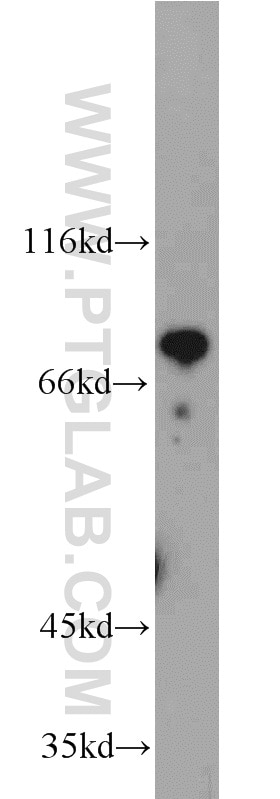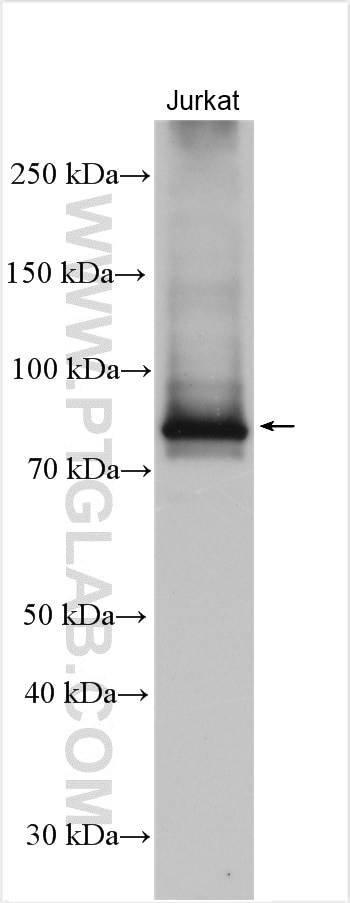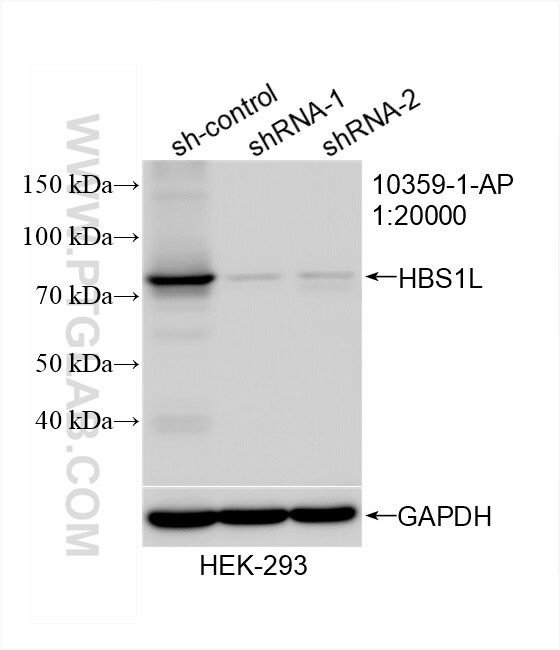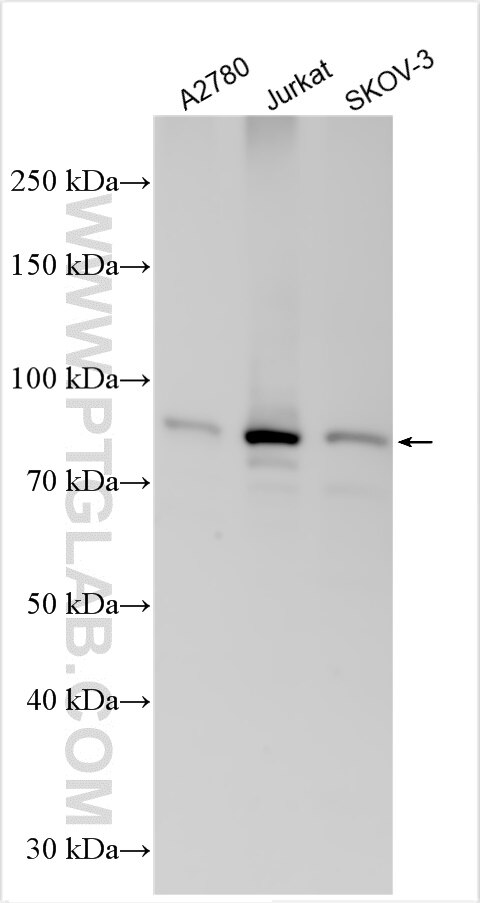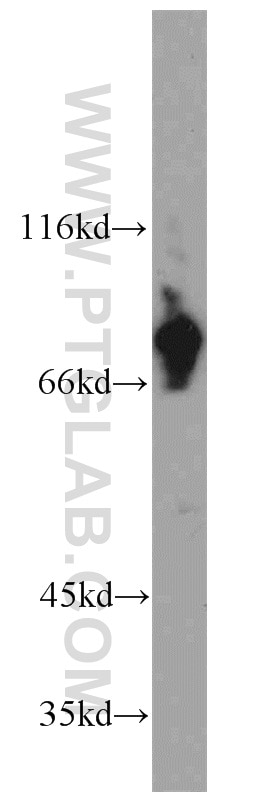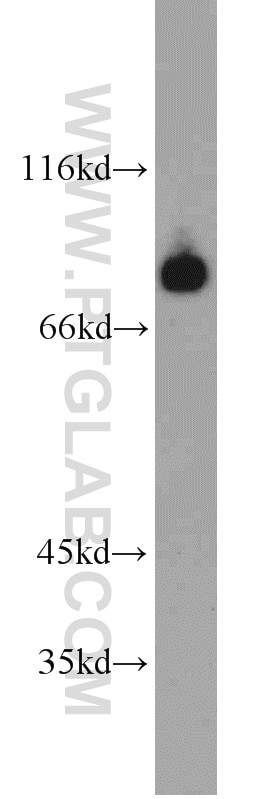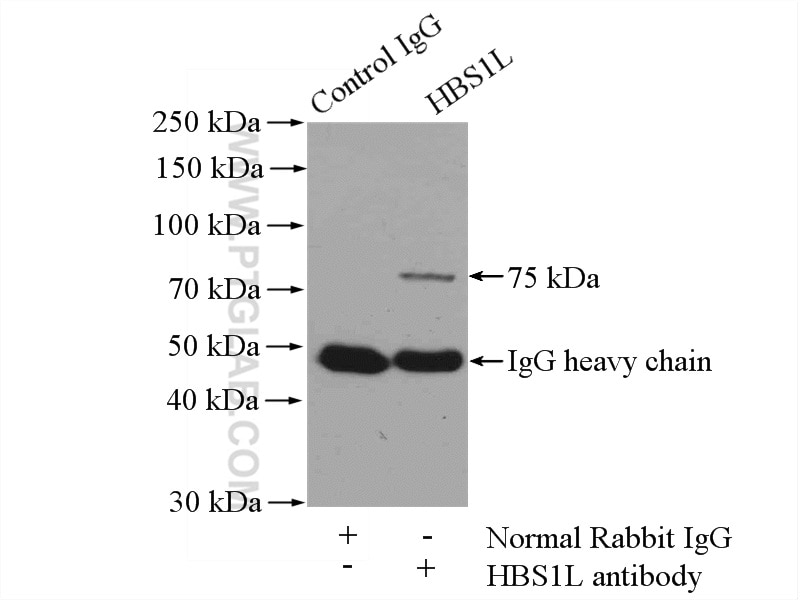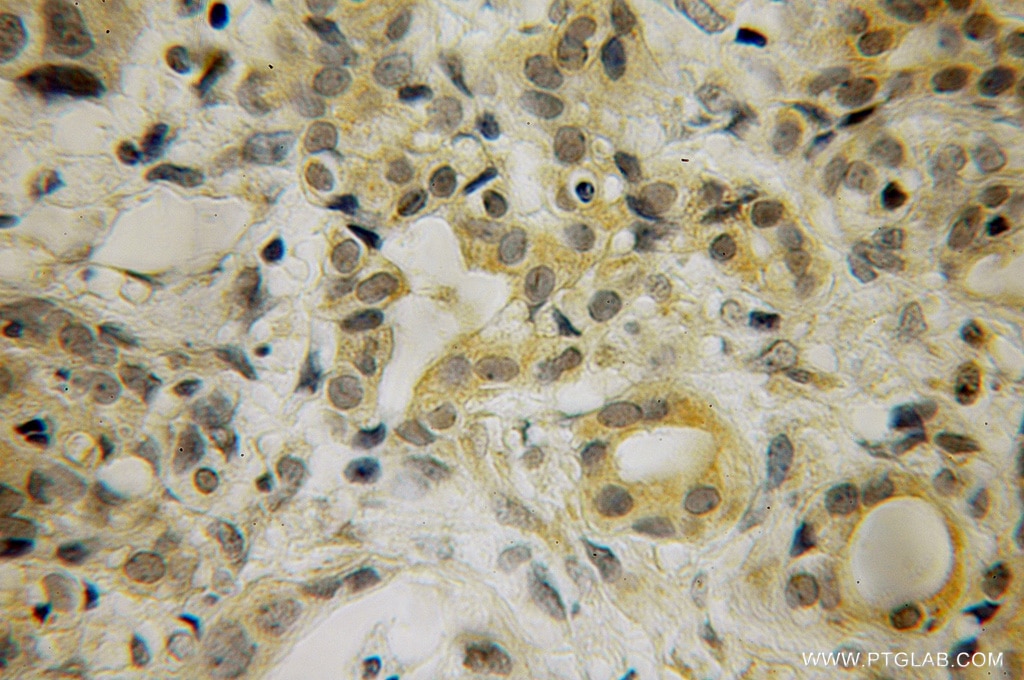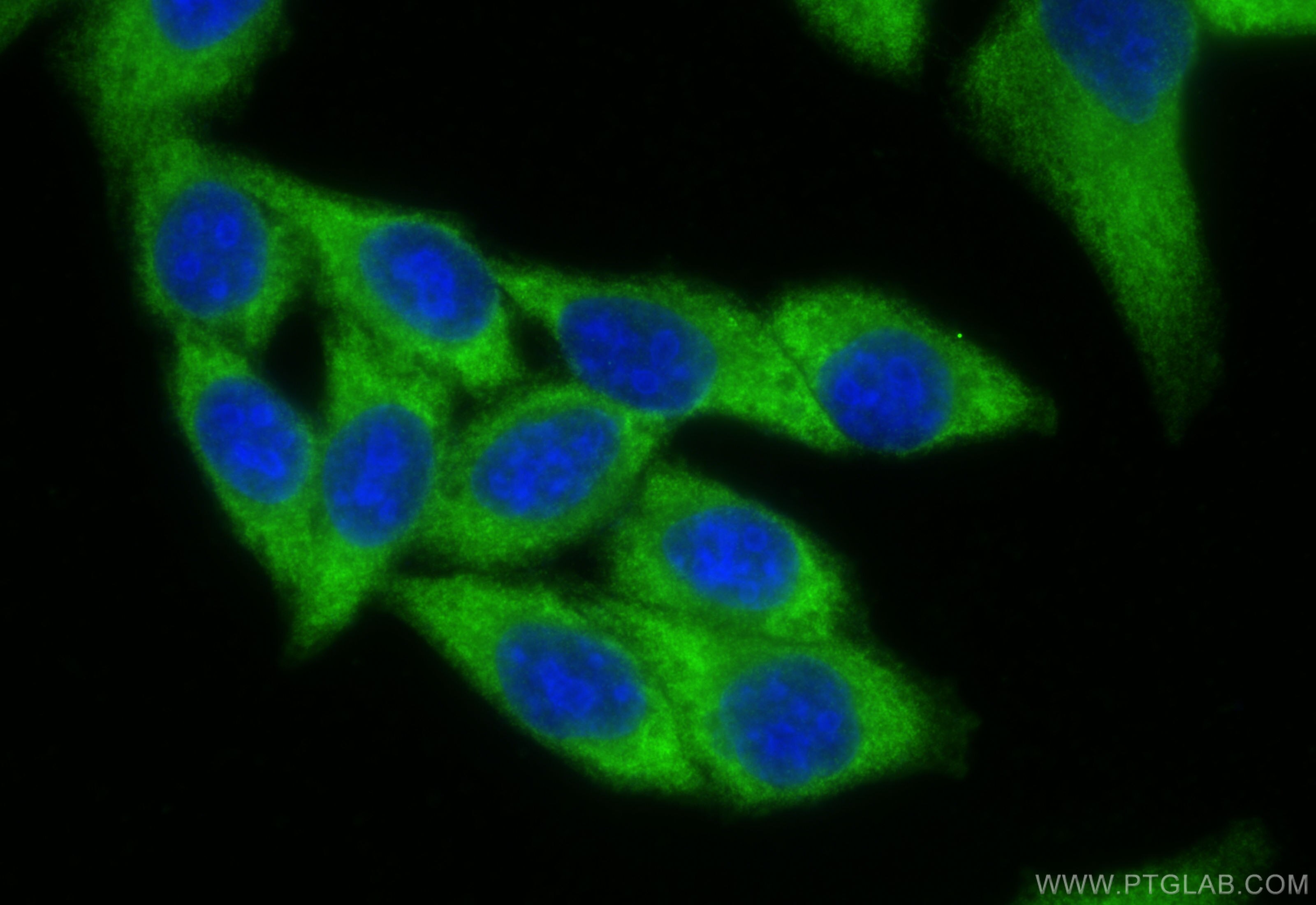Tested Applications
| Positive WB detected in | Jurkat cells, A2780 cells, HEK-293 cells, mouse brain tissue, SKOV-3 cells |
| Positive IP detected in | mouse brain tissue |
| Positive IHC detected in | human pancreas cancer tissue Note: suggested antigen retrieval with TE buffer pH 9.0; (*) Alternatively, antigen retrieval may be performed with citrate buffer pH 6.0 |
| Positive IF/ICC detected in | HepG2 cells |
Recommended dilution
| Application | Dilution |
|---|---|
| Western Blot (WB) | WB : 1:5000-1:50000 |
| Immunoprecipitation (IP) | IP : 0.5-4.0 ug for 1.0-3.0 mg of total protein lysate |
| Immunohistochemistry (IHC) | IHC : 1:20-1:200 |
| Immunofluorescence (IF)/ICC | IF/ICC : 1:200-1:800 |
| It is recommended that this reagent should be titrated in each testing system to obtain optimal results. | |
| Sample-dependent, Check data in validation data gallery. | |
Published Applications
| KD/KO | See 3 publications below |
| WB | See 8 publications below |
| IF | See 1 publications below |
Product Information
10359-1-AP targets HBS1L in WB, IHC, IF/ICC, IP, ELISA applications and shows reactivity with human, mouse samples.
| Tested Reactivity | human, mouse |
| Cited Reactivity | human, mouse |
| Host / Isotype | Rabbit / IgG |
| Class | Polyclonal |
| Type | Antibody |
| Immunogen | HBS1L fusion protein Ag0388 Predict reactive species |
| Full Name | HBS1-like (S. cerevisiae) |
| Calculated Molecular Weight | 75 kDa |
| Observed Molecular Weight | 75 kDa |
| GenBank Accession Number | BC001465 |
| Gene Symbol | HBS1L |
| Gene ID (NCBI) | 10767 |
| RRID | AB_2114730 |
| Conjugate | Unconjugated |
| Form | Liquid |
| Purification Method | Antigen affinity purification |
| UNIPROT ID | Q9Y450 |
| Storage Buffer | PBS with 0.02% sodium azide and 50% glycerol , pH 7.3 |
| Storage Conditions | Store at -20°C. Stable for one year after shipment. Aliquoting is unnecessary for -20oC storage. 20ul sizes contain 0.1% BSA. |
Background Information
HBS1L (HBS1-like), also known as EF-1a or ERFS, is a 684 amino acid protein that belongs to the GTP-binding elongation factor family and exists as multiple alternatively spliced isoforms. Expressed in kidney, brain, heart, placenta, liver, muscle and pancreas, HSB1L is thought to play a role in controlling fetal hemoglobin levels, specifically influencing platelet, monocyte and erythrocyte hemoglobin content. The gene encoding HBS1L maps to a locus on human chromosome 6 that is associated with sickle cell anemia and beta-thalassemia, suggesting a role for HBS1L in the pathogenesis of blood disorders.This antibody specifically recognizes the 75kd human HBS1L protein.
Protocols
| Product Specific Protocols | |
|---|---|
| WB protocol for HBS1L antibody 10359-1-AP | Download protocol |
| IHC protocol for HBS1L antibody 10359-1-AP | Download protocol |
| IF protocol for HBS1L antibody 10359-1-AP | Download protocol |
| IP protocol for HBS1L antibody 10359-1-AP | Download protocol |
| Standard Protocols | |
|---|---|
| Click here to view our Standard Protocols |
Publications
| Species | Application | Title |
|---|---|---|
Mol Cell Deep sequencing shows multiple oligouridylations are required for 3' to 5' degradation of histone mRNAs on polyribosomes. | ||
Elife Defects in translation-dependent quality control pathways lead to convergent molecular and neurodevelopmental pathology. | ||
Biochem J Eukaryotic elongation factor 2 kinase regulates the cold stress response by slowing translation elongation. | ||
J Biol Chem RNA exosome complex regulates stability of Hepatitis B Virus's X-mRNA transcript in a Non-Stop mediated (NSD) RNA quality control mechanism.
| ||
PLoS Genet Mammalian Hbs1L deficiency causes congenital anomalies and developmental delay associated with Pelota depletion and 80S monosome accumulation.
| ||
Immunity Ribosome-rescuer PELO catalyzes the oligomeric assembly of NOD-like receptor family proteins via activating their ATPase enzymatic activity
|
